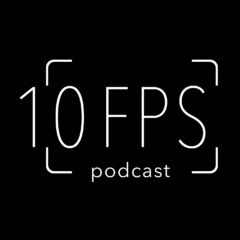Decoding Opioid Crisis Coverage: A Candid Conversation with Brandon Soderberg
The opioid crisis continues to be a major concern in the United States, and its portrayal in the media often sparks debate. In this ARCHIVE episode of “10 Frames Per Second,” podcast hosts Joe Giordano and Elena Volkova sat down with Brandon Soderberg, a journalist and author, to delve into the complexities of covering opioid addiction. Soderberg, who has personal experience with heroin use, offers a critical perspective on how media photography often dehumanizes individuals struggling with addiction, perpetuating harmful stereotypes.
The Problem with “Zonked Out” Imagery
Soderberg expresses frustration with the prevalent use of “zonked out” imagery in media coverage of the opioid crisis. He argues that:
- Dehumanization: These images, often depicting people with needles or passed out, strip individuals of their humanity, reducing them to mere symptoms of their condition. This can contribute to a societal perception that addicts are not fully human, making it easier to advocate for harsh punishments rather than treatment.
- Lack of Nuance: The focus on extreme imagery fails to capture the multifaceted reality of addiction, including the community that can form around it and the varied experiences of users.
- Racial Bias: Soderberg notes that much of the widely circulated imagery focuses on white individuals, potentially reflecting a societal bias where the crisis is only deemed a “crisis” when it impacts white communities, while overlooking or underreporting the impact on communities of color.
Beyond the Stereotypes: Community and Lived Experience
A key point raised by Soderberg is the importance of community in the lives of people who use drugs. He highlights that:
- Finding Connection: For many, drug use can provide a sense of community, however flawed, which can be particularly appealing to those feeling isolated or marginalized.
- The Need for Empathy: He suggests that media coverage would benefit from a more nuanced approach that acknowledges these aspects of community and lived experience.
- Personal Experience Matters: Soderberg advocates for more journalists and photographers with lived experience to cover the opioid crisis. He believes this would lead to more authentic and empathetic reporting, moving beyond sensationalism.
Challenging Ethical Boundaries in Photojournalism
The conversation also touches upon the ethical considerations of photographing vulnerable individuals:
- Consent and Exploitation: Soderberg questions whether individuals, especially when in a compromised state, can truly give informed consent to be photographed. He draws parallels to historical photojournalism that aimed to drive policy change but raises concerns about the ethical implications when such images are used purely for titillation or to reinforce stereotypes.
- The Gordon Parks Example: The hosts discuss a poignant anecdote from Gordon Parks, a renowned photographer, who admitted to feeling guilt over a photograph taken of a man injecting drugs, even though it was for a commissioned story. This highlights the lingering ethical dilemmas faced by photojournalists.
Towards More Representative and Empathetic Coverage
The discussion concludes with a look at potential solutions and positive examples:
- Stock Art for Accurate Representation: Soderberg points to initiatives like StashHouse.org [defunct], a crowdsourced stock art site for drug reporting, as a valuable resource for obtaining more authentic and less sensationalized imagery.
- Focus on Recovery and Nuance: While acknowledging the difficulty, Soderberg and the hosts express hope for more coverage that explores recovery, the varied experiences of users, and the broader societal factors contributing to addiction.
- The Importance of “Why”: Ultimately, Soderberg’s plea is for reporters and photographers to approach the opioid crisis with more imagination, honesty, and a willingness to delve deeper than the surface-level, often repeated, images of despair.
The conversation on “10 Frames Per Second” serves as a crucial reminder that effective and ethical journalism requires not only documenting reality but also understanding and conveying the complex human stories behind it.
Note: As this conversation is an archive episode it doesn’t mention the excellent book that Brandon co-authored since the recording “I Got a Monster”, the story of corruption in the Baltimore City Police Department Gun Trace Task Force and its aftermath.
Photojournalism, Opioid Addiction, Media Coverage, Drug Use, Journalism Ethics, Photography, Users, Addicts, Language, Violence, Illness, Disease, AIDS Crisis, Nuance, Opioids, White Crisis, Dehumanize, Crime, Society, Heroin, Community, Isolation, Suburbs, Vulnerability, Titillation, Access, Understanding, Distance, Manageable, Manageable, Humanize, Imagination, Editor, Consent, Trauma, Policy Change, Labor Laws, Journalism Ethics, Ethics, Honesty, Conversation, Respectful, Sincere, Recovery, Portraits, Advocacy Journalism, Homelessness, Gentrification, Housing Prices, Open-Air Drug Market, Perception, Bias, Media Bias, White Bias, Misinformation, Fentanyl, Overdose, Methadone, Propaganda, Shame, Vilification, Solidarity, Competition, Exploitative, Safe Consumption Sites, Choice, Addiction, Alcoholism, Gordon Parks, Richard Price, Clockers, Sam Anderson, Boomtown, Oklahoma City, Oklahoma Basketball, Baltimore Police Gun Trace Task Force Scandal, Corruption, John Dewey, Art and Experience, Photojournalism Experience, William Mumler, Victorian America, Post-Civil War, Ghosts, Mary Todd Lincoln, Photoshop, Image Manipulation, Flash, Weegee, Crime Photography, Overdose Prevention, Hamden, Royal Farms, WLOY Radio, Loyola University Maryland, Audrey Gatewood, John Devecka
Podcast: Play in new window | Download
Subscribe on your preferred platform! Apple Podcasts | Spotify | Amazon Music | Android | Pandora | iHeartRadio | JioSaavn | Podchaser | Gaana | TuneIn | Deezer | Anghami | Youtube Music | RSS
